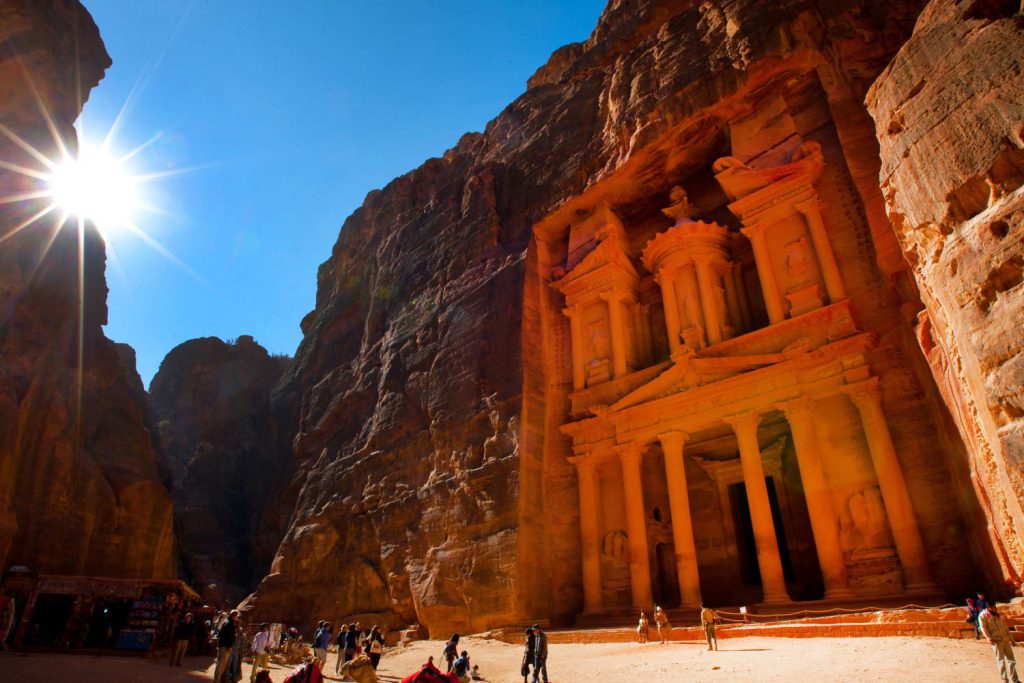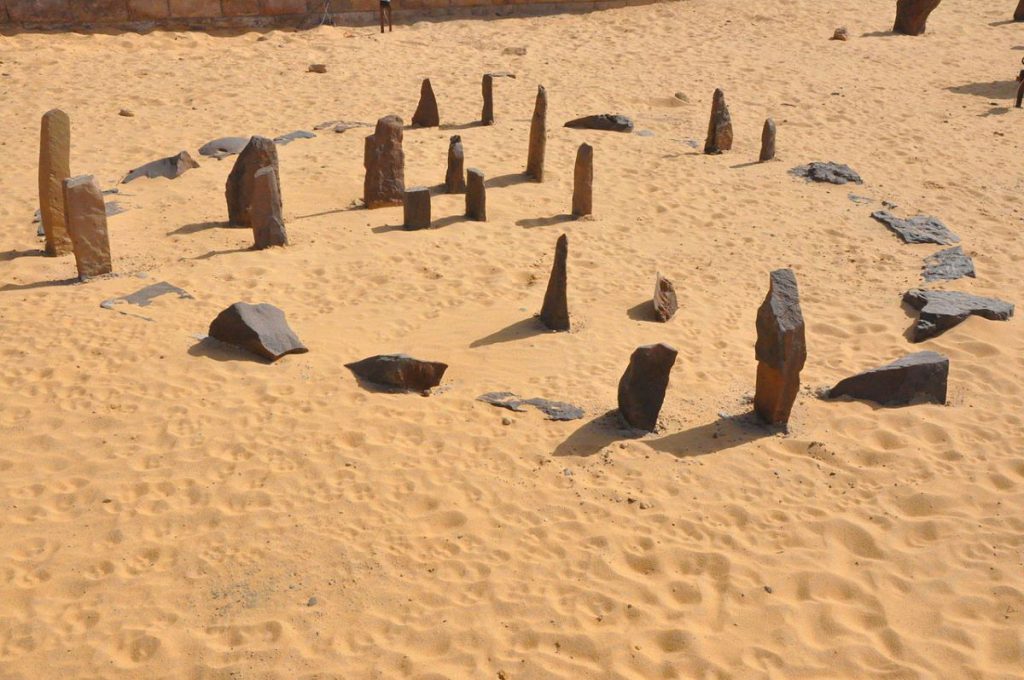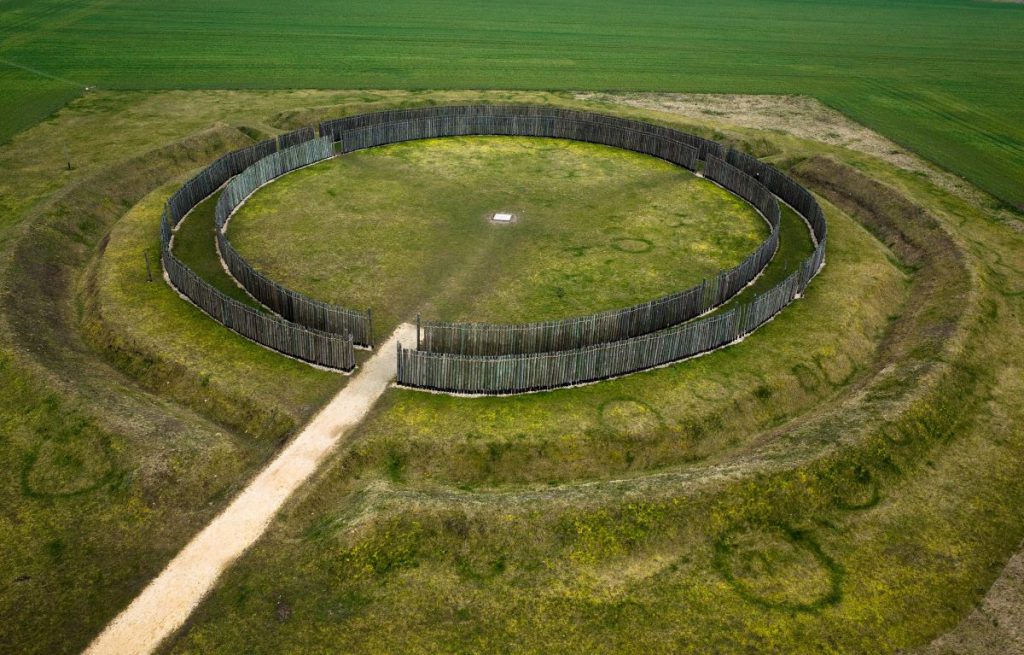Five Solstice Sites That Aren’t Stonehenge
With the summer solstice approaching in the Northern Hemisphere, the site of Stonehenge is likely to pop up quite a bit on your news feeds. While that particular Neolithic monument is perhaps the best-known example of an ancient celestial calendar, there are many other examples from different eras and from all over the world. Charting the movement of the sun and other stars to keep track of important seasonal events is something that many cultures have in common.
In celebration of the solstice, here are five other archaeological examples of calendar monuments that are thought to have been created to mark the longest and shortest days of the year.
1. PETRA, JORDAN
The Nabatean civilization built the famous city of Petra so that the sun would align with and illuminate the city’s important religious centers during solstices.
The complex of tombs and monuments is perhaps best known as the final backdrop in Indiana Jones and the Last Crusade for the protagonist’s search for the “Holy Grail.” In real life, Petra is a significant archaeological site, created by a culture that presided over a spice empire from roughly the fourth century B.C. until A.D. 106.
Researchers performed a statistical analysis of the orientation of sacred buildings within Petra and determined that light and shadow effects on these buildings played a major part in their design and construction. This suggests that the sky, and likely a sun deity in particular, was especially important in Nabatean religion. The Nabatean culture left behind very few examples of written documents, and the traditions of the civilization no longer exist, so Petra provides a tantalizing hint of what some Nabatean religious observances may have been.
2. SPIRO MOUNDS, OKLAHOMA
The 12 earthwork mounds of the Spiro archaeological site, just outside of the town of Spiro, Oklahoma, were built so their shadows appeared to align in unique ways when the sun rose and set on the seasonal equinoxes and solstices.
The site was created during the Mississippian Period, approximately A.D. 800 to A.D. 1650, when a large, complex, and interconnected society developed in eastern North America. At its height, ancient Spiro had a population of at least several thousand people, and though it was not the largest-known Mississippian city, it was thought to be an important ceremonial center.
Unfortunately, relatively little is known about the site or the people who lived there. Starting in 1933, a group of commercial diggers labeling themselves the Pocola Mining Company acquired land rights to one of the mounds and dug with the express purpose of removing artifacts. They extracted all that they considered sellable, discarding the rest. Today the site is protected—and hosts walking tours.
3. NABTA PLAYA, EGYPT
One of the oldest-known megalith calendar sites in the world was built around 7,000 years ago in what was once a lakebed in the African Sahara. It has been proposed that an inner circle of stones at Nabta Playa could have aided with calendar measurements and some outer megaliths once aligned to significant stars—although a 2010 report from the International Council on Monuments and Sites notes “whether this was intentional, and how the site should be interpreted, is highly controversial.”
The archaeology of the site suggests that the people who built it were a nomadic group of pastoralists who herded cattle across the Sahara region. The climate at this time included a summer monsoon season that filled seasonal lakes, or playas, making them habitable for part of the year. In an often-featureless desert expanse, the megaliths of Nabta Playa would have provided a visual marker—perhaps a beacon for travelers moving their herds to a known oasis.
4. BIG ROCK, CALIFORNIA
A specially carved boulder in Los Angeles County, California, has been interpreted as a solstice calendar by tribal archaeologist Gary Stickel, who works for the Gabrieleño Band of the Kizh Nation.
Stickel was working to preserve art that has been damaged by weather and graffiti on a large boulder known as Big Rock when he noticed a small hole deliberately carved into the boulder. The shape of the hole matches a known type of Indigenous artifact known as a sun stone or a cog stone, which typically has five protrusions around the edge. Such an object, placed upright in the hole, seems to align like a sundial to the cardinal directions during the solstices.
It’s hoped that preservation of some faded pictographs on the stone, which can be seen more clearly in an early 20th-century photograph and were written about in records from the 19th century, will allow archaeologists to determine the role that Big Rock held within the religious life of the Kizh people. The rock art may have once depicted elements of the Kizh creation story and is thought to have also played a possible role in fertility rituals for young women.
5. GOSECK CIRCLE, GERMANY
In 1991, aerial photographs of a wheat field in Goseck, Germany, showed dark ridges outlining a circle, with marked gaps at three roughly equally spaced points around its circumference.
When archaeologists excavated the field in 2002, they found the remains of a circular wooden wall surrounded on the outside by a narrow ditch. The gaps in the circle seem deliberately constructed to track the sun’s rising and setting during the summer and winter solstices. The enclosure dates to the Neolithic period, around 4900 B.C. (around the same date as the stone circle at Nabta Playa) and seems to have been in use for about 200 years.
Excavations revealed human skeletons and cattle bones—particularly skulls, which suggests the possibility of ritual sacrifices. The wooden walls of the site were reconstructed in the early 2000s, and the site is now open to the public.




























